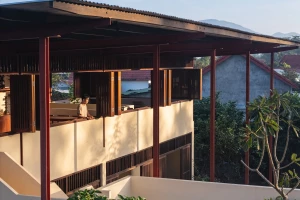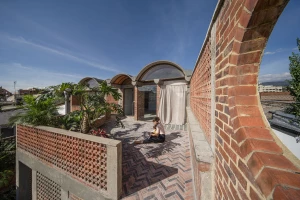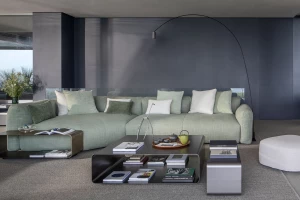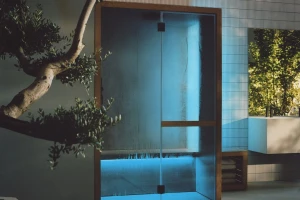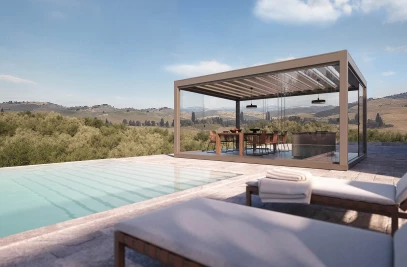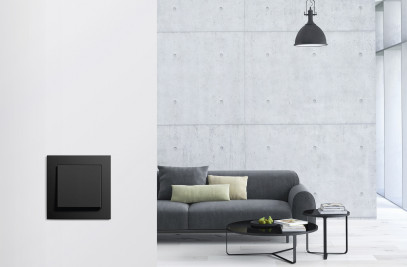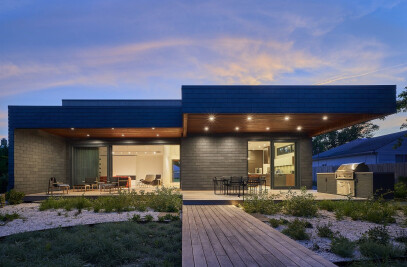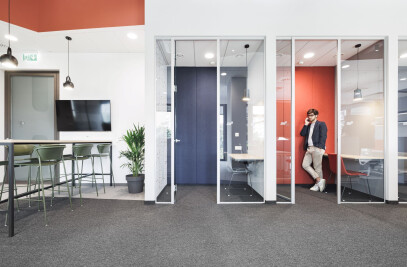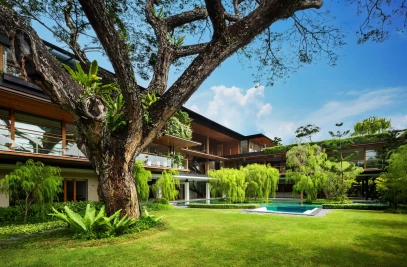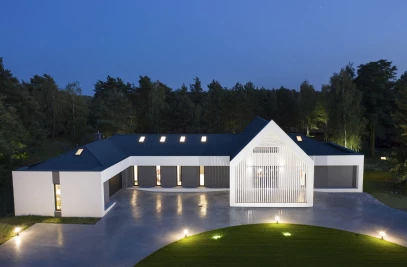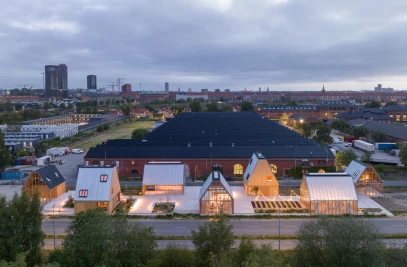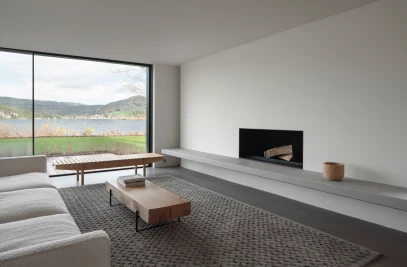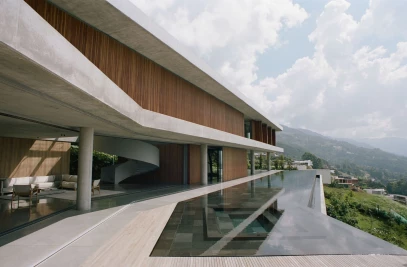The newly completed Universtäts - Kinderspital Zürich (University Children’s Hospital) has opened in the Swiss city's picturesque Zürich-Lengg district. Designed by international architectural practice Herzog & de Meuron, it is Switzerland’s largest facility for both children and adolescents. The hospital is split across two buildings: an acute care hospital and a research and teaching facility. The perceptive design emphasizes the role that architecture plays in contributing to the healing process.
Located to the south of the site, the three-story acute care hospital is made up of a concrete frame with detailed wooden infills and a slightly concave, elongated horizontal shape that fits within the flat landscape. To the north of the site, situated on a hill, the research and teaching facility is housed in a distinctive white cylindrical building; in its core, Herzog & de Meuron inserted a bright, five-story central atrium.
The project makes extensive use of landscaping (by August + Margrith Künzel Landschaftsarchitekten) with the understanding that greenery and nature are conducive to the well-being of patients, staff, and visitors. More than 250 trees have been planted and boulders, removed during the construction, have been placed around the buildings, a reference to millennia-old glaciers.
Acute Care Hospital
The new buildings sit alongside several hospital buildings from different eras. The entrance to the Children’s Hospital is defined by a large open gate and is directly opposite the historic University Psychiatric Clinic (Psychiatrische Universitätsklinik Zürich) — a listed building, it was first established in 1870 and is known as the Burghölzli (named after a nearby wooded hill). “The concave gesture of the facade creates a shared forecourt for both institutions,” says Herzog & de Meuron.
The hospital is a single three-story structure (plus two basement levels). Its gate opens onto a round courtyard planted with trees, leading to the main entrance. A “main street” links a garden entrance on one side with an emergency room and entrance on the opposite side. This level contains high-use treatment facilities such as imaging diagnostics and a surgical day clinic. A central main street on each of the three floors passes various green courtyards that provide orientation and bring daylight into the building.
“The acute care hospital is organized like a town with courtyards, streets, alleys, and squares,” says Pierre de Meuron, Herzog & de Meuron Founding Partner. “These, along with the thoughtful use of wood and carefully placed art installations, provide clear and memorable orientation, plenty of daylight, and a connection to nature.”
The second floor houses a hospital school, pharmacy, and around 600 workspaces for medical and administrative staff, oriented towards the outside. The top floor is the quietest area in the hospital and has 114 individual rooms for child and adolescent inpatients. Herzog & de Meuron designed each room in the manner of a wooden cottage with its own roof: the rooms are set back and staggered and rooftops have varying inclines.
“The facade of the hospital consists of a three-dimensional, load-bearing concrete structure that combines the first and second floors,” explains Herzog & de Meuron. “The depth of the facade and the infill, which may be wood, glass, fabric, or vegetation, varies depending on the orientation and activity inside.” With the exception of the concrete supports and circulation cores, the studio made consistent use of lightweight construction materials throughout the building. This approach ensures that interiors are flexible and can be reconfigured as required.
Herzog & de Meuron’s design emphasizes the importance of a healing environment and the role that architecture plays in contributing to the healing process. Founding partner Jacques Herzog remarks that “ironically, hospitals all over the world and even in Switzerland are often the ugliest places.” As a practice, it is an issue that Herzog & de Meuron has been addressing over the past twenty years. “At the Children’s Hospital, people can see for themselves how daylight coming in from outside and variations in proportion can animate and change a room, how plants and vegetation can blur the distinction between inside and outside, and how materials are not just beautiful to look at but also pleasing to the touch,” says Herzog.
Research and Teaching Facility
To encourage conversation and collaboration between researchers, Herzog & de Meuron arranged the rooms in this white cylindrical building around a five-story central atrium. Laboratories and accompanying offices enjoy unobstructed views of the surrounding landscape; open workspaces organized around the atrium are used by doctoral students and laboratory staff.
Beneath the atrium, the design of the teaching and study areas responds directly to the landscape, with three lecture halls stepped into the sloping terrain. Movable walls ensure that lecture halls, a lobby, and cafe can be configured as one large space. “This creates an agora with a stage in the middle for special events and capacity for an audience of 670 people,” says Herzog & de Meuron. The inclusion of a small oculus connects the atrium above with the agora below.
The research and teaching building has seven levels above ground and two below ground. A standalone structure, it is defined by its geometric shape and the use of limited materials. The building’s cantilevered balconies and tall white-painted railings give the structure a physical yet airy presence.
The acute care hospital and research and teaching facility were awarded the platinum certification of building sustainability from the Swiss Sustainable Building Council.
Project details
Competition: March 2011 – February 2012
Design and delivery: June 2014 – July 2024
Site area
Acute Care Hospital: 33,250 square meters (357,900 square feet)
Research and Teaching Facility: 13,400 square meters (144,236 square feet)
Gross floor area
Acute Care Hospital: 79,215 square meters (852,663 square feet)
Research and Teaching Facility: 16,101 square meters (173,310 square feet) / Tunnel: 930 square meters (10,010 square feet)
Dimensions
Acute Care Hospital: length 200 meters (656 feet); width 110 meters (361 feet); height 12 – 19 meters (39 – 62 feet)
Research and Teaching Facility: diameter 55.4 meters (182 feet); height 30 meters (98 feet)



















































